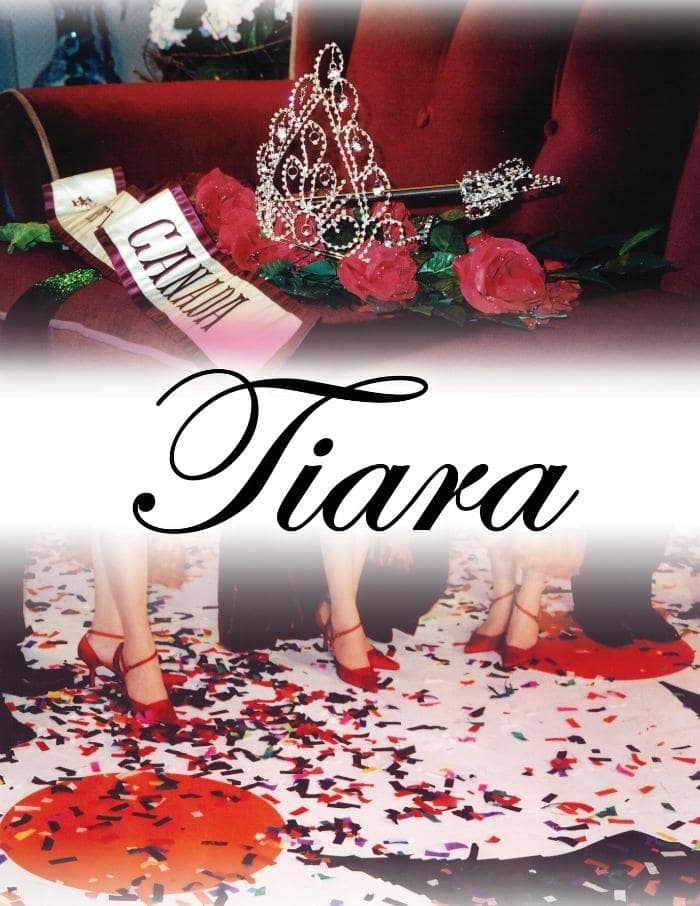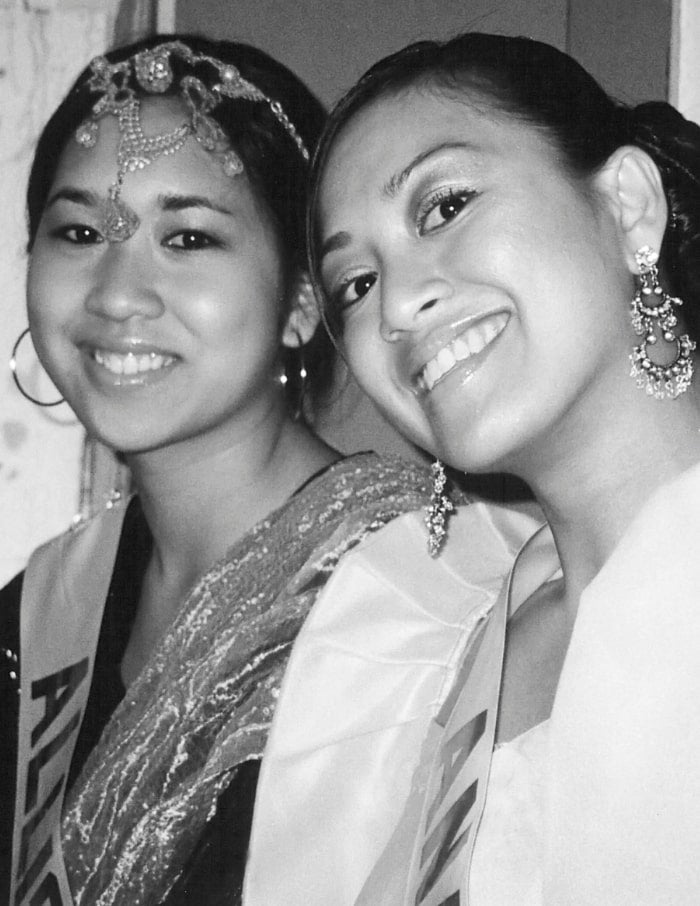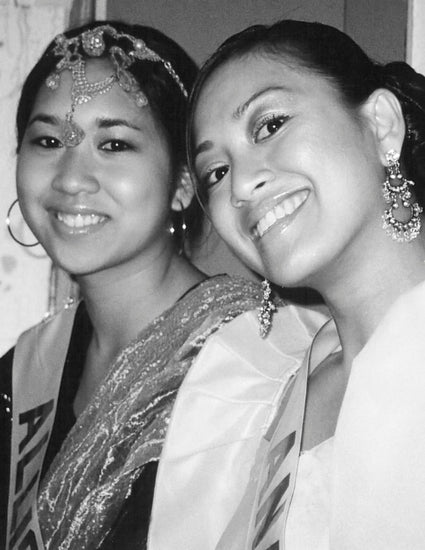Tiara
Director
Monica MakProducers
Monica Mak Siobhan Productions- Release Date 2010
- Running Time 22 minutes
- Closed Captions Yes
- Availability Canada, USA
- Prix habituel
- $225.00
- Prix habituel
-
- Prix soldé
- $225.00
- Prix unitaire
- par
License Definitions
License Definitions
Institutions: Purchase at this price level if you are from a university, college, school board, school district, government agency, business or association. Note: Price does not include inter-library loan rights.
Community: Purchase at this price level if you are from a single K-12 School, registered not-for-profit, community organization, public library. Note: Price does not include right to circulate DVD/program to other schools within district.
DSL Terms
DSL Terms
DSL stands for Digital Site License and permits the buyer of the license (or Licensee) to host the film on a private, password-protected, closed server for the term of the license for educational use. If your institution does not have a server or a private third party hosting platform or you are looking into a license for curated one-time events or fixed term exhibitions, please contact us.
See below for more information about DSL terms of use. Upon order placement, our staff will contact you within 3 business days to arrange digital file delivery.
Book a Screening
Book a Screening
Impossible de charger la disponibilité du service de retrait
Partager


Over the decades, beauty pageantry has gained a faithful following in Asian communities across the country. Year after year, young Canadian-born women, especially those of Filipino, Chinese and South Asian descent, flock to ethnic beauty pageants in the urban hubs of Toronto, Montreal and Vancouver. Shrugging off popular myths about beauty contestants, such as "Beauty queens are nothing more than brainless pretty faces," these women, mostly senior high school and university students, gravitate to these competitions in droves.
Why? What makes that crown so attractive? In Tiara, their reasons are as diverse as their sequined costumes.
Director: Monica Mak
Producers: Monica Mak, Siobhan Productions
Director's Statement
"Tiara" – my labour of love over six years – is grounded on a theme that Asian-Canadian women may find important: the validation and celebration of one’s physical difference from Western standards of beauty. This documentary is significant to visibly ethnic women, like myself, since a lot of us have grown up feeling, at one point in our lives, ashamed or inadequate by our outer appearance. There are those who never get over such self-defeating behaviour. But there are those of us who do. My exploration of Asian-Canadian beauty pageants shows that it offers one outlet for those of us who wish to overcome our feelings of inferior complexity. As I demonstrate in the film, this ethnic subculture offers an environment where, through playful exhibition, we reclaim our right to feel attractive and appreciated by our respective communities, despite appearing “different” or “exotic” to the rest of mainstream Canadian society.
To a general audience, "Tiara" would serve as a vital reflection of this Asian-Canadian cultural practice since it provides a balanced portrayal of its pros and cons. This is shown through the middle-ground stance that I, as the film’s narrator, support. Shaping my nuanced point of view are contrasting perspectives given by supporters and opponents of this practice. On the one hand, I understand why numerous Canadian-born Chinese, Filipino, and South Asian women flock annually to pageants held by their community – and are willing to put up with myths ranging from “She’s nothing more than a pretty face” to “She’s making a mockery of women’s rights.” As mentioned above, for some, it is to seek confirmation for looking different from the Canadian mainstream. For others, it is also the chance to attain stardom in the “old country.” While the Miss Chinese-Toronto has ties to the TV and pop music industry in Hong Kong, the Miss India Canada offers its winners the opportunity to seal acting or modeling contracts in Bollywood. On the other hand, I am aware of why critics are opposed to pageantry culture. After all, the act of judging a woman based on her physical appearance can be exploitative and superficial. All in all, my ambivalent (or what one could call my “love-hate”) approach towards ethnic pageantry culture lends itself to an engaging and well-rounded story.
Being a visible minority female, I am naturally drawn to issues related to women and cultural diversity. I have always wanted to explore these jointly and extensively through the documentary form. For this reason, "Tiara" has been essential to my growth and progression as a filmmaker. It has been inspiring me to cultivate and expand my knowledge in this particular area. For instance, during the months spent on pre-production research and on the actual production of this film, I have learned that the union between femininity and race is based on diverse and complex notions about non-Caucasian female beauty, body image, ethnic pride, transnational customs, and liminal cultural identities. By using my work to reflect such knowledge acquisition, I believe that I have been maturing as an artist. I am also confident that such work, in turn, will serve as my own personal blueprint to help me produce future artistic works in an equally substantial and in-depth manner.
I have always had an affinity for topics related to women of colour. In my previous work "Unwanted Images", I address the subject of gendered violence directed toward black South African women and children in the post-Apartheid era. Similarly, in another previous project entitled "Women Educating for Peace", I shed light on the peace-building classroom strategies of a multi-ethnic group of female teachers in post-9/11 Montreal. In essence, I have always felt that, through my work, all non-mainstream female subjects could be fairly represented. As I could empathize with their experience of being viewed differently based on ethnicity or physicality, I could infuse this understanding in my portrayal of them. Although ethnic pageantry is a thematic departure from my foray into the realms of femicide and peace-building pedagogy, "Tiara", like these earlier works, has been upholding my artistic mandate to be culturally sensitive to my documented subjects. Additionally, the film has been enabling me to develop a stronger off camera rapport with my interviewees. Since "Unwanted Images" and "Women Educating Peace" were completed in short work periods, I did not have much time to develop stronger bonds with the on-screen individuals. In contrast, on "Tiara", I have been able to establish the trust and confidence of featured interview subjects.
Often documentary films developed by emerging filmmakers are author-driven. In other words, the filmmaker, who is usually the narrator, uses his/her perspective to navigate the film forward. Consequently all other voices present in the film become mere foils to make the filmmaker’s perspective superior to all others. By reworking the concept of an author-driven documentary, through
"Tiara", I aim to challenge this tendency and, in this way, contribute to the art of moving images. At the film’s start, my voice seemingly moves the film forward since I serve as the film’s narrator. However, as the film progresses, it becomes apparent that the myriad of other voices heard in the film, especially that of recurring character Allison Abcede, shapes my viewpoint. This is shown in two ways. First, my voiceover narration is primarily used to introduce or give context to an interview subject about to speak. Second, in my closing remarks, I show that my middle-ground stance toward ethnic pageantry, is influenced by the personal stories and opinions of various featured characters; these include beauty contestants, pageant organizers, a pageant historian, a playwright/actress, and even a pageant-queen-turned-opponent. In short, through "Tiara", I demonstrate that an author-driven documentary can refer to a film wherein the filmmaker enables other people’s voices to share centre stage and to inform her own voice.
If your institution does not have a server or you are looking into a license for curated one-time events or fixed term exhibitions, please contact us.
Digital Site License (DSL) to Use Copyrighted Material - Terms of Use
The following terms are understood, accepted and effective upon payment of License Fee to Moving Images Distribution, the Licensor, and the buyer, the Licensee, named on the invoice. Copyrighted material, as identified on the invoice, hereinafter referred to as the Program.
- License: The Licensor hereby grants to the Licensee, for the DSL term listed on the invoice, the educational rights for digital streaming of the Program for use within the Licensee’s private, closed system, password-protected platform. Licensee acknowledges it shall not sublicense, sublease, rent, resell, duplicate, digitize or transfer to any other medium or format. Licensee shall not edit, cut or alter the Program nor post it on publicly-accessible websites or networks. This license (i) will not be included in any courses that could be sold to other institutions for future distance-education use; (ii) is non-transferable; and (iii) is not assignable by the Licensee.
- Users: The Licensee agrees that the users for this license shall be restricted to the Licensee’s accredited faculty, staff, students, and walk-in Library patrons.
- Expiration of Term: Upon expiration of the license term, the Licensee shall cease streaming of the Program and the Program must be inaccessible to Users after license term expiry or deleted from the Licensee’s digital servers upon expiry.
Acknowledgement of Limitations: The Licensee acknowledges the Program is copyrighted and the Licensor has a copyright interest in the Program which is legally protected against the Licensee’s use, copying or exhibition except as is set out above.
DVD w/PPR. PPR stands for Public Performance Rights. A DVD with PPR license permits the buyer to use the film in non-theatrical venues for educational purposes, community screenings and other non-commercial purposes. Standard educational DVD w/PPR purchases are in perpetuity for use by the institution, college, school, library, its staff and students.
All DVDs sales are final. We guarantee that all DVDs will be free from defects at the time of delivery. Defective DVDs will be replaced without charge within 30 days of date of shipment.
The creators of all works distributed by Moving Images Distribution hold copyright for their work. Copyrights are a form of intellectual property that gives the owner of the original work exclusive rights to that work, including its publication, distribution, adaptation and use. All purchasers are to specify use required precisely at time of ordering and agree to comply with all copyright, trademark and intellectual property law. No materials purchased may be used outside the rights acquired at time of purchase or may be reproduced in whole or in part by any method now known or hereafter devised. No materials purchased without specific broadcast license and agreement may be broadcast, retransmitted or exhibited in whole or in part without a specific license agreement from Moving Images Distribution for such use.






